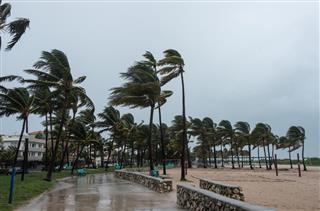
The part of the Earth’s surface lying between the Tropic of Cancer and Tropic of Capricorn is known as the ‘torrid zone’. In this article, we will put forth more information on some lesser-known attributes of this geographical division of planet Earth.
Based on the Sun’s behavior and climate of the region, Earth is divided into five geographical regions or zones, namely the north frigid zone, north temperate zone, torrid zone, south temperate zone, and the south frigid zone. The region lying between the tropical circles, i.e., the Tropic of Cancer and Tropic of Capricorn, is known as the ‘torrid zone’. In terms of climate, this is one of the hottest regions on the planet, with two annual seasons: the dry season and wet season. The Sun’s behavior in this zone is typically characterized by its movement between the two tropical circles.
What is the Torrid Zone?
In geography, the torrid zone is more often known as the tropical zone or tropics owing to its location between the tropical circles. Going by its definition, it is the region of Earth lying between the Tropic of Cancer at 23.5°North and Tropic of Capricorn at 23.5°South of the Equator, typically characterized by prevalence of hot climate. This also implies that the Tropic of Cancer forms the torrid zone boundary in the Northern Hemisphere, while the Tropic of Capricorn forms its boundary in the Southern Hemisphere.
Sun’s Behavior
The torrid zone consists of all those areas of the world wherein the Sun reaches directly overhead at least once every year. Basically, the Sun’s journey can be traced from the Equator to the Tropic of Cancer, back to the Equator, and then to the Tropic of Capricorn. The same process is repeated every year and therefore, all the regions within these latitudes have the Sun right overhead at some point of time in the year. When the Sun is at the Equator, it is known as equinoxes; when it is at the Tropic of Cancer, it is known as June solstice; and when it is at the Tropic of Capricorn, it is known as December solstice.
Climate
As we mentioned earlier, torrid zone experiences hot weather, typically characterized by the prevalence of dry and wet seasons. These two seasons are attributed to the movement of Inter-tropical Convergence Zone (ITCZ) from in between the tropical circles. This is in stark contrast to areas outside this region wherein climate is typically characterized by four seasons: spring, summer, autumn, and winter. The torrid zone climate, also referred to as tropical climate, is further categorized into different sub-types on the basis of precipitation pattern.
- Tropical rainforest climate experienced in Brazil, Congo, Malaysia, United States, etc.
- Tropical monsoon climate experienced in Guinea, Bangladesh, Australia, United States, etc.
- Tropical wet and dry or savanna climate experienced in India, Indonesia, Brazil, Mexico, Nigeria, etc.
Plants and Animals
In terms of biodiversity, the torrid zone has no competition whatsoever in the entire world. It is home to millions of plant and animal species; some of which are endemic to this region. The fact that some of the world richest ecosystems―including the Amazon rainforest, Congo basin region, and the Southeast Asian rainforests―fall in this zone, is more than enough to highlight the importance of this region when it comes to world biodiversity.
You can also find deserts and snow-clad mountains within its boundaries, which makes it one of the most diverse regions on the planet. The list of plants found here contains 160,000 species of plants, ranging from lichen and moss to coral tree and sacred fig. The list of animal species, on the other hand, consists of millions of animals, ranging from tiny insects, like beetles and moths, to large mammals, like gorillas and elephants.
Other than being rich in terms of biodiversity, this region is also quite rich in terms of human settlements. As of today, around 40 percent of the world population is concentrated in the torrid zone. Furthermore, it is estimated that this region will house 60 percent of the world population in the next 50 years.













